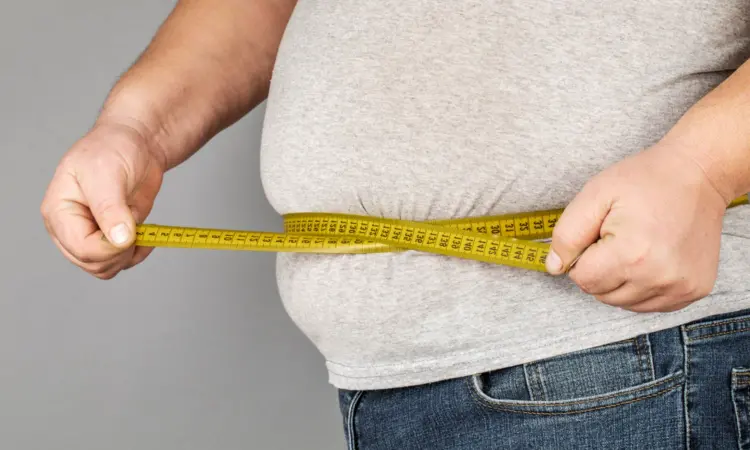- Home
- Medical news & Guidelines
- Anesthesiology
- Cardiology and CTVS
- Critical Care
- Dentistry
- Dermatology
- Diabetes and Endocrinology
- ENT
- Gastroenterology
- Medicine
- Nephrology
- Neurology
- Obstretics-Gynaecology
- Oncology
- Ophthalmology
- Orthopaedics
- Pediatrics-Neonatology
- Psychiatry
- Pulmonology
- Radiology
- Surgery
- Urology
- Laboratory Medicine
- Diet
- Nursing
- Paramedical
- Physiotherapy
- Health news
- Fact Check
- Bone Health Fact Check
- Brain Health Fact Check
- Cancer Related Fact Check
- Child Care Fact Check
- Dental and oral health fact check
- Diabetes and metabolic health fact check
- Diet and Nutrition Fact Check
- Eye and ENT Care Fact Check
- Fitness fact check
- Gut health fact check
- Heart health fact check
- Kidney health fact check
- Medical education fact check
- Men's health fact check
- Respiratory fact check
- Skin and hair care fact check
- Vaccine and Immunization fact check
- Women's health fact check
- AYUSH
- State News
- Andaman and Nicobar Islands
- Andhra Pradesh
- Arunachal Pradesh
- Assam
- Bihar
- Chandigarh
- Chattisgarh
- Dadra and Nagar Haveli
- Daman and Diu
- Delhi
- Goa
- Gujarat
- Haryana
- Himachal Pradesh
- Jammu & Kashmir
- Jharkhand
- Karnataka
- Kerala
- Ladakh
- Lakshadweep
- Madhya Pradesh
- Maharashtra
- Manipur
- Meghalaya
- Mizoram
- Nagaland
- Odisha
- Puducherry
- Punjab
- Rajasthan
- Sikkim
- Tamil Nadu
- Telangana
- Tripura
- Uttar Pradesh
- Uttrakhand
- West Bengal
- Medical Education
- Industry
Waist to hip circumference and waist to height ratio strongly predict blood sugar control in diabetes

Ethiopia: Researchers have found in a new study that Waist-to-hip circumference and waist-to-height ratio could strongly predict glycemic control than body mass index among adult patients with diabetes.
Poor blood sugar control is a public health concern, and indicators of obesity, typically circumference ratio (WHR), waist circumference (WC), and waist-to-height ratio (WHtR) better predict performance for poor blood sugar control than body mass index (BMI), the study revealed.
The study results were produced in the journal PLOS One on November 9, 2022.
Diabetes mellitus (DM) is a chronic condition of abnormal glucose metabolism due to insufficient insulin or insulin resistance, characterized by high blood sugar levels. Over the past three decades, diabetes incidence has increased from 11.3 to 22.9 million, and 476 million are affected by DM. On the other hand, obesity is rising at an alarming rate, where WC, BMI, WHtR, and WHC could strongly predict the risk of poor glycemic control and insulin resistance.
Maintaining an optimal blood sugar level below 130 mg dl-1 is critical for diabetes treatment, although the target may be contextualized for each patient. Poorly controlled blood sugar is prevalent and contributes to a considerable burden of diabetes-related morbidity, and central obesity holds importance in the pathogenesis of diabetes and related complications, which could predict such risks, yet there is a lack of evidence.
Against the above background, Abdu Oumer, College of Medicine and Health Sciences, Dire Dawa University, Dire Dawa, Ethiopia, and colleagues sought to find out which anthropometric indicators could be used as surrogate markers of blood sugar control and this was done in Ethiopia to validate which has been reported in the West so far.
The study demonstrated the following findings:
- 92% of patients with diabetes were enrolled, with a mean age of 49.6 years.
- · The mean fasting blood glucose level was 189 (±72) mg dl-1, where 76.4% and 93.3% had poor glycemic control based on FBS and HgA1c, respectively.
- · WC (AUC = 0.90), WHR (AUC = 0.64), and WHtR (AUC = 0.87) have higher predictive performance for poor glycemic control at cut-off points above 100 cm, 0.95, and 0.62, respectively.
- · Obesity indices showed a lower predictive performance for poor glycemic control based on FBS. Body mass index (BMI) had poor predictive performance for poor glycemic control (AUC = 0.26).
Anthropometric indices of obesity could potentially serve as a valuable tool for predicting poor blood sugar control in diabetes patients. Yet, they are less sensitive to predicting poor blood sugar control status. Waist-to-hip circumference, waist circumference, and waist-to-height ratio have better predictive performance than hip circumference (HC) and BMI measurements in identifying the risks of poorly controlled blood sugar. BMI was found to be a less sensitive and specific tool for predicting blood sugar control in diabetes patients. However, anthropometric obesity measurements with the proposed cut-off points for WHtR, WHR, and WC have significant practical implications for predicting poor blood sugar control.
The researchers recommended further study based on a larger sample of diabetes patients, including other biomarkers for assessing the visceral adiposity index and its ability to predict blood sugar control. Poor glycemic control is also more prevalent, and patients should follow the recommended medication and lifestyle-related practices to reduce obesity risk and, ultimately, optimal glucose control.
"Health professionals and patients might use the recommended measures at least to identify imminent risks of poor blood sugar control and target their holistic care," the researchers concluded.
Reference:
Oumer A, Ale A, Tariku Z, Hamza A, Abera L, Seifu A (2022) Waist-to-hip circumference and waist-to-height ratio could strongly predict glycemic control than body mass index among adult patients with diabetes in Ethiopia: ROC analysis. PLoS ONE 17(11): e0273786. https://doi.org/10.1371/journal.pone.0273786
Dr Kamal Kant Kohli-MBBS, DTCD- a chest specialist with more than 30 years of practice and a flair for writing clinical articles, Dr Kamal Kant Kohli joined Medical Dialogues as a Chief Editor of Medical News. Besides writing articles, as an editor, he proofreads and verifies all the medical content published on Medical Dialogues including those coming from journals, studies,medical conferences,guidelines etc. Email: drkohli@medicaldialogues.in. Contact no. 011-43720751


